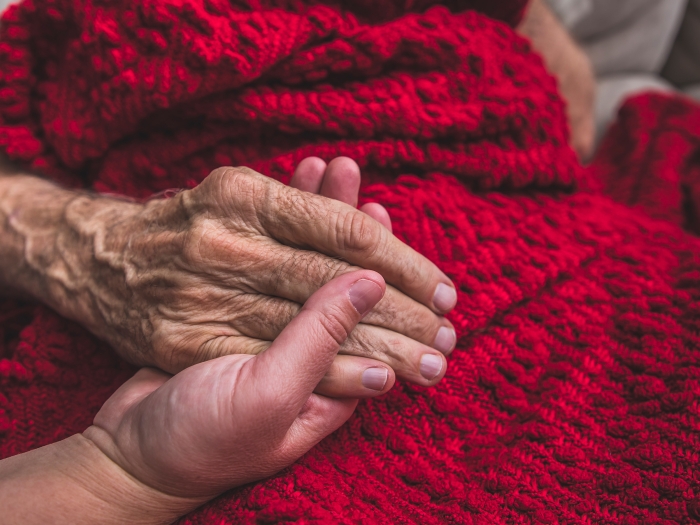Advanced stroke treatments are only available in early windows after the onset of symptoms
5:00 AM
Author |

During a stroke, Black Americans arrive later to emergency departments — which are less likely to be notified of a patient’s condition ahead of time, a national study shows.
The research, led by University of Michigan and Brown University, found that it took approximately 28 minutes longer for a Black patient to be brought in for emergency care after displaying symptoms of a stroke.
The median time for any patient to make it to the hospital following stroke symptoms was 176 minutes.
Results are published in Circulation.
“We found that Black patients who are having a stroke are being underserved in several ways during the chain of survival, a process that requires everyone, from bystanders to first responders and clinicians, to collaborate and move quickly to save lives,” said first author Regina Royan, M.D., M.P.H., clinical assistant professor of emergency medicine at University of Michigan Medical School.
SEE ALSO: Timely response leads to complete recovery for young stroke survivor
“This is a disparity that must be addressed, as Black Americans have a higher prevalence of stroke, get strokes younger and die at greater numbers from the condition.”
The research team reviewed data from more than 600,000 patients in the American Heart Association Get With The Guidelines Stroke Registry from mid-2015 through 2019.
Investigators found no significant difference between Black and white patients in the use of emergency services for transport during a stroke.
We are seeing that disparities in the care of acute stroke begin before the patient even reaches the hospital. We need to devote greater attention to eliminating these differences in care from the minute a patient calls 911."Regina Royan, M.D., M.P.H.
However, EMS workers were approximately 20% less likely to alert a receiving hospital ahead of a Black patient’s arrival compared to a white patient.
Hispanic and Asian stroke patients also had lower odds of a prehospital notification.
“We know that an EMS notification of stroke leads to more timely and high-quality care when a patient arrives at the emergency department, yet these gaps in prehospital notification exist and may be getting worse,” said Brian Stamm, M.D., co-author and clinical instructor of neurology at U-M Medical School.
“Quality improvements for EMS should be a target for stroke system redesigns in an effort to achieve greater health equity.”
Patients in counties with a worse social deprivation score, a composite of demographic measures including poverty, educational attainment and access to transportation, also took longer to arrive at the hospital after displaying stroke symptoms.
Hospitals receiving patients from counties with worse social deprivation were also less likely to be notified ahead of time by EMS.
Researchers say that the longer intervals they observed between symptom onset and hospital arrival may be, in part, due to systemic issues in EMS care.
“In rural areas, an entire county may be serviced by a single municipal EMS agency,” said senior author Tracy E. Madsen, M.D., Ph.D., emergency physician and vice chair of research in the Department of Emergency Medicine at Brown University.
“In our study, the association between social deprivation and lack of EMS notification ahead of transport may be the result of variations in EMS agency-level protocols, though other provider and patient level factors that vary at the county level could also be contributing. Future national studies could evaluate the role that different EMS agencies play in prehospital stroke performance.”
The vast majority of people who suffer a stroke do not make it to the hospital in time to receive the most advanced stroke treatments, including clot-busting medications and minimally invasive thrombectomy.
Another study published in 2024 using Get With The Guidelines data from Yale New Haven Hospital found that patients who arrived at the hospital after the window for those treatments closed were more likely to live in disadvantaged neighborhoods.
The current study significantly expands upon this prior literature by using the national Get With The Guidelines Stroke Registry.
“Any significant delay when it comes to stroke represents a threat to achieving health equity,” Royan said.
“Unfortunately, we are seeing that disparities in the care of acute stroke begin before the patient even reaches the hospital. We need to devote greater attention to eliminating these differences in care from the minute a patient calls 911.“
Additional authors: Christopher Becker, M.D., M.A., and Dawn Kleindorfer, M.D., both of University of Michigan, Timmy Lin, M.P.H., Janette Baird, Ph.D., Rebecca Karb, M.D., Ph.D., and Tina Burton, M.D., all of Rhode Island Hospital/ Brown University, and Shyam Prabhakaran, M.D. M.S., of University of Chicago.
Funding/disclosures: This project was part of the American Heart Association 2023 GWTG-Stroke Data Challenge.
Paper cited: “Disparities in EMS use, prehospital notification, and symptom onset to arrival in patients with acute stroke,” Circulation. DOI: 10.1161/CIRCULATIONAHA.124.070694
Sign up for Health Lab newsletters today. Get medical tips from top experts and learn about new scientific discoveries every week by subscribing to Health Lab’s two newsletters, Health & Wellness and Research & Innovation.
Sign up for the Health Lab Podcast: Add us on Spotify, Apple Podcasts or wherever you get you listen to your favorite shows.

Explore a variety of health care news & stories by visiting the Health Lab home page for more articles.

Department of Communication at Michigan Medicine

Clinical Instructor
Want top health & research news weekly? Sign up for Health Lab’s newsletters today!





